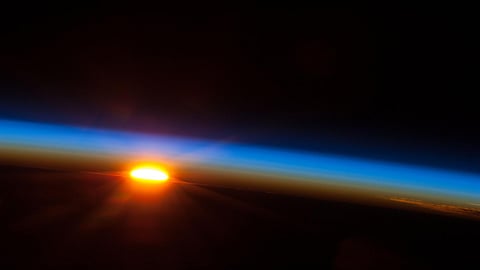

NEW DELHI: New research has reduced the uncertainty of climate change impact linked to the stratosphere—a dry region of the atmosphere containing the ozone layers that absorb ultraviolet rays and protect the Earth. The study was recently published in the journal Nature Geoscience.
It has always been a challenge to quantify the presence of water vapour, a potent greenhouse gas, in the stratosphere. Excess water vapour potentially influences ozone depletion, especially in the polar regions.
The stratosphere, above the troposphere, is an extremely dry region of the atmosphere that is 10-50 km above the Earth’s surface. Here temperature inversion takes place—the lower layer of the stratosphere is colder and as one moves upwards, the layers get hotter.
Due to the low temperatures in the region of the atmosphere, the air gets freeze-dried and very little water enters the stratosphere. In fact, the primary source of stratospheric water vapour is the oxidation of methane, which is transported from the troposphere.
So, the rising temperature due to climate change and increasing methane concentration are both expected to inject more water vapour into the stratosphere. Different studies project an ‘extreme scenario’—25% increase in water vapour concentration per degree of warming in the stratosphere that could delay the ozone layer’s recovery.
But the new research, 'Response of stratospheric water vapour to warming constrained by satellite observations', led by the University of East Anglia (UEA), questioned the ‘extreme scenario’.
The research narrows down this ‘extreme range’ of likely future stratospheric water vapour amounts and finds it does not delay the recovery of the ozone layer as was earlier projected.
The new approach projects a 50% reduction in the impact of water vapour as compared to earlier estimates. The research predicted future climate change by examining water vapour amounts in the stratospheric layer.
“It means that stratospheric water changes are very unlikely to exceed half the value of the largest changes seen amongst the climate model runs,” said Manoj Joshi, Professor of Climate Dynamics at UEA and a co-author of the paper.
The study led by Prof Peer Nowack, now at the Institute of Theoretical Informatics at the Karlsruhe Institute of Technology, Germany, has developed a new statistical learning approach.
This approach combines information from satellite observations with state-of-the-art climate model data to narrow the range of likely future stratospheric water vapour amounts.
Water vapour affects ozone chemistry
Water vapour, a greenhouse gas in the stratosphere is likely to increase with global warming but not at the rate earlier models had projected. Prof Manoj Joshi, Professor of Climate Dynamics, School of Environmental Sciences, University of East Anglia, UK, also co-author of a new research paper, tells Jitendra Choubey that the new research brought more certainty to the presence of water vapour in the stratosphere, adding it not likely to delay the recovery of depleting ozone layers.
What is the stratosphere’s role in the Earth’s atmosphere? What effect does global warming have on it?
A: The stratosphere lies 10-50 km above the Earth’s surface. It’s home to the ozone layer that shields surface life from harmful ultraviolet radiation. It is also a region of the atmosphere that is very dry: stratospheric water vapour concentrations are measured in a few parts per million volume (ppmv), rather than the 2,000-20,000 ppmv at the Earth’s surface. Although man-made increases in CO2 are warming the surface and lowermost atmosphere, CO2 actually cools the stratosphere—and is also predicted to change the strength of its circulation and winds slightly.
How do you define the level of uncertainty? Can the level of uncertainty quantify in terms of numbers, and how does this research reduce it? What is the next step?
A: The observational constraint in Nowack et al implies that Stratospheric Water Vapour (SWV) is likely to increase with global warming at a rate of 0.31 ± 0.39 ppmv or per degree warming at surface (for a 90% confidence interval). However, it also allows us to say that those climate model projections with very large increases in SWV, which could, for example, substantially delay ozone recovery, are unlikely.
Is global warming a major source of water vapour to the stratosphere? The low concentration of water vapour in the stratosphere is mainly controlled by how air enters the stratosphere. As air ascends in the tropics into the stratosphere, it is freeze-dried as it passes through the region around the tropopause, 16 km above tropical Earth surface, where temperatures are about -80°C. Global warming is projected to heat the tropopause region somewhat.